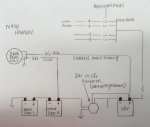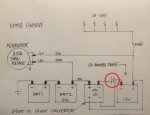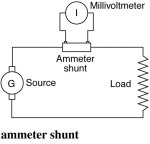pipeandwire
New member
- 17
- 1
- 0
- Location
- chicago
200a dual voltage alt.
Hey all... common 24v to 12v question here but I’ve yet to see a thread with the conclusion I’ve come up with and am looking for feedback on my setup. Basicly I’m looking at utilizing the 14v output of the alternator to a seperate 3rd battery and using another 24v to 12v converter to keep it going when the vehicle is not running. Any comments or concerns on my thoughts??
Hey all... common 24v to 12v question here but I’ve yet to see a thread with the conclusion I’ve come up with and am looking for feedback on my setup. Basicly I’m looking at utilizing the 14v output of the alternator to a seperate 3rd battery and using another 24v to 12v converter to keep it going when the vehicle is not running. Any comments or concerns on my thoughts??
Attachments
-
28 KB Views: 66
Last edited:






